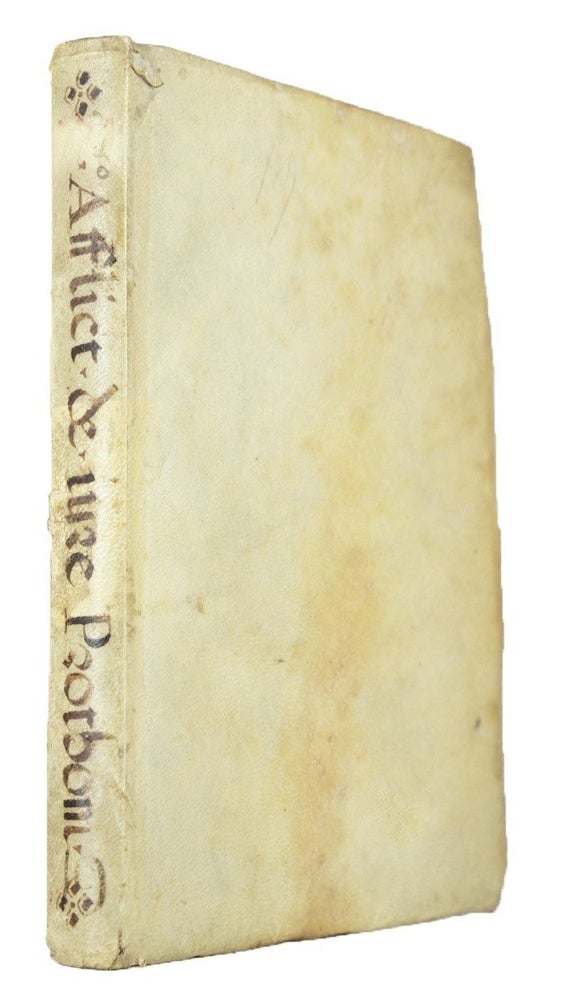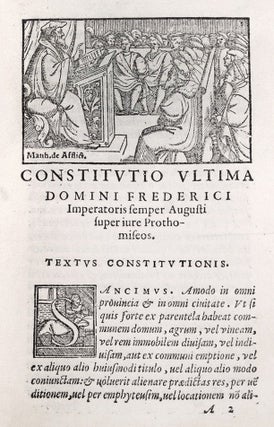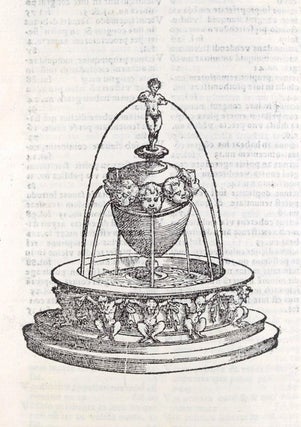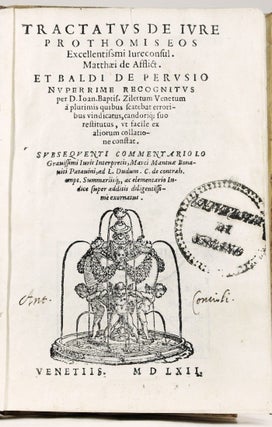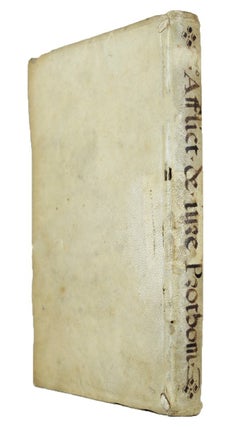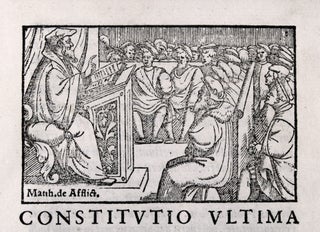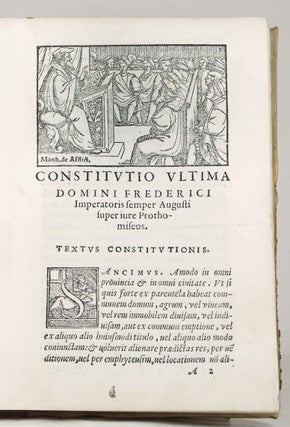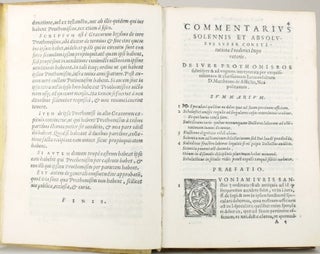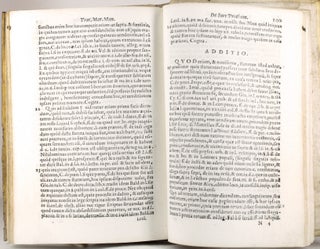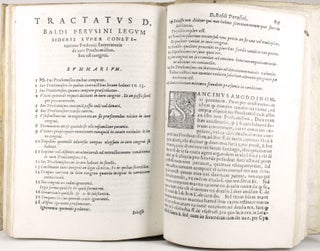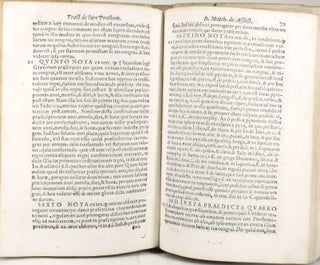Tractatus de Iure Prothomiseos
Venezia: Zilettum, 1562. D'Afflitto, Benavides, Ubaldi, Ziletti - Tractatus de Iure Prothomiseos – 1562
Tractatus de iure prothomiseos excellentissimi iureconsul. Matthaei de Afflict. and Baldi de Perusio. Nuperrime recognitus for d. Ioann. baptist. Ziletum Venetum a plurimis quibus scatebat errorsbus vindicatus, candoriq; his restitutus, ut facile ex aliorum collatione constat. Subsequenti commentariolo grauissimi iuris interpretis, Marci Mantuae Bonauiti Patauini, ad L. Dudum de contrahen. empt. Summarioque ac elementary index super additis diligentissime exornatus.
Venetiis, apud Zilettum, 1562
Matteo D'Afflitto
Co-authors:
Marco Mantova Benavides
Baldo of the Ubaldis
Giovanni Battista Ziletti
Rare 16th century treaty on the right of pre-emption in the Napoletan native law.
Beautiful illustration representing the consultation of judges. Work of the Italian jurist Matteo d'Afflitto, in Latin Matthaeus de Afflictis (Naples, 1447 ca - Naples, 1523), son of a nobleman, scholar of humanities and jurisprudence at the University of Naples, where he was taught by Antonio d'Alessandro and where he became a doctor of civil law.
Without having a professorship, he taught Roman and feudal law in Naples and also practiced as a lawyer and jurisconsult. Like most Neapolitan jurists of the time, d'Afflitto concentrated exclusively on feudal law and the ius patrium, the indigenous Neapolitan law. He was among the last adherents of an influential school of Neapolitan jurists which had supplied Europe with academic volumes on feudal law since the 13th century.
The pre-emption or protimesis (from the Greek πϱοτίμησιϚ) has been widely used since Greco-Roman antiquity to channel the alienation of immovable property towards owners who had claimed objective connections with the alienated property; initially aimed at favoring relatives and consortes, it was then extended to previous condominiums of assets inherited or otherwise purchased in common, to neighbors, to socii.
Cards (2), 109, (14, Index). Coeval full parchment binding. Handwritten title on spine. Tie us in sight. Small holes in the rear hinge, parchment with signs of wear. Binding partially detached. Two intaglio imprints on the title page and at the end, respectively depicting a gushing fountain in the shape of an amphora, supported by cherubs, on the front; a gushing fountain in the shape of an amphora, with a woman at the top and around the heads of cherubs supported by satyrs, at the end. Worn title page with calligrams, Ex libris stamp and handwritten words, reinforced on the reverse with ancient handwritten paper. Woodcut vignette in the text and drop caps.
234 pp
15,7 x 11 cm. Item #87
Price: $500.00

